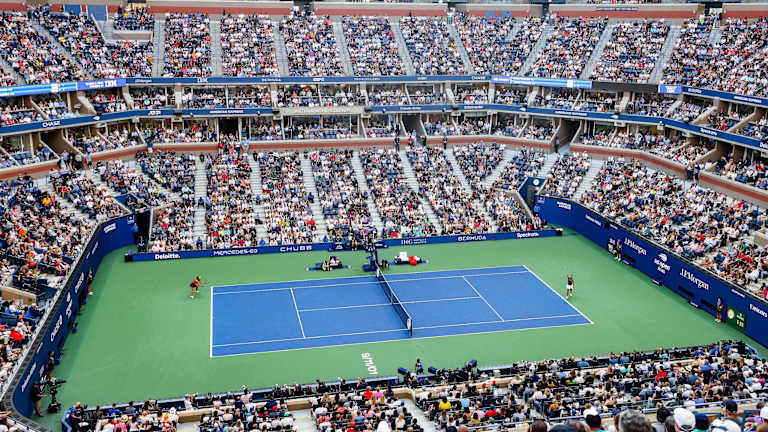Tennis in Need of Reform: A Detailed Analysis of Proposed Changes
Tennis, a sport steeped in tradition, is facing calls for reform as players, fans, and experts alike voice concerns over the current state of the game. From issues like repeated false starts to controversial match points, the sport is grappling with challenges that are impacting the overall experience for everyone involved.
Proposed Solutions for a Better Tennis Experience
One of the key areas of contention is the implementation of solid rules and the enforcement of existing ones. Critics argue that the game has become messy and chaotic, with little regard for maintaining a fair and transparent playing field. One proposed change is to eliminate the practice of catching a toss instead of hitting the serve, which is seen as an unnecessary do-over that disrupts the flow of the game.
Another issue that has garnered attention is the use of Video Assistant Referee (VAR) in tennis. While some believe that VAR could help rectify controversial calls and ensure fair play, others raise concerns about the logistical challenges of implementing the system across multiple courts during a tournament. However, the success of Hawkeye Electronic Line-calling System on select courts has provided a glimpse into the potential benefits of incorporating technology into officiating.
The Impact of Late Matches and Scheduling Challenges
One of the persistent problems in tennis is the scheduling of matches, particularly those that extend late into the night or early morning hours. This not only affects the players’ performance but also raises questions about the fairness and sustainability of such practices. The need for a curfew to prevent matches from dragging on past midnight has been emphasized by players and fans alike.
The rise of night tennis, enabled by roofed stadiums, has added a new dimension to the sport’s scheduling dynamics. While night sessions offer increased revenue opportunities and appeal to media outlets, they also pose challenges in terms of player fatigue and recovery time between matches.
Addressing the Term “GOAT” and Other Cultural Shifts
Finally, the debate around the term “GOAT” (Greatest of All Time) has sparked discussions about how we recognize and celebrate tennis champions. With the sport boasting a diverse range of talent and accomplishments, some argue that the singular designation of a GOAT may not do justice to the breadth of talent in the game. Finding a balance between acknowledging individual greatness and honoring the sport’s rich history remains a point of contention.
In conclusion, tennis is at a crossroads, grappling with a range of issues that require thoughtful consideration and decisive action. By addressing key areas of concern, such as rule enforcement, technology integration, scheduling practices, and cultural shifts, the sport can evolve and adapt to meet the needs and expectations of players and fans alike.
As the tennis community continues to explore ways to improve the game, it is clear that collaboration and open dialogue will be essential in shaping the future of this beloved sport.
Improving Rule Enforcement for a Fairer Game
One of the suggestions to enhance the tennis experience is the introduction of stricter rule enforcement. By ensuring that players adhere to the rules more closely, the game can maintain a level playing field and prevent unfair advantages. Some have proposed the use of technology, such as sensors in the net to detect illegal touches or foot faults, to assist officials in making accurate calls.
Moreover, implementing a clear and consistent code of conduct for players can help reduce the number of controversies on the court. By holding players accountable for their actions and behavior, tennis can uphold its values of sportsmanship and integrity.
Embracing Technology for Better Officiating
While the use of technology in officiating has been a topic of debate, there is a growing consensus that it can improve the accuracy of calls and enhance the overall spectator experience. Integrating tools like electronic line-calling systems on more courts can minimize human error and provide players with a fairer assessment of their shots.
Additionally, exploring innovations like real-time data analytics to track player performance and behavior can offer valuable insights for coaches, players, and fans. By leveraging technology, tennis can modernize its approach to coaching, training, and strategy development.
Striking a Balance with Night Tennis
As night tennis becomes increasingly popular, finding a balance between the excitement of evening matches and the well-being of players is crucial. Implementing measures to ensure adequate rest and recovery time for athletes competing in late matches is essential to maintain a high level of play and reduce the risk of injuries.
Moreover, optimizing scheduling practices to accommodate both traditional daytime matches and evening sessions can help maximize fan engagement and revenue while also prioritizing the health and performance of the players.
Celebrating Tennis Excellence without Labels
While the concept of the “Greatest of All Time” (GOAT) is often used to honor exceptional players, it can also create unnecessary rivalry and division among fans and athletes. Emphasizing the unique strengths and contributions of each player, regardless of their GOAT status, can promote a more inclusive and appreciative tennis culture.
By celebrating diversity in playing styles, personalities, and achievements, tennis can showcase the richness and complexity of the sport. Recognizing that greatness comes in many forms can foster a more supportive and harmonious environment for players to thrive and inspire future generations of tennis stars.
Conclusion: Navigating the Path to Tennis Reform
As tennis continues to evolve and address the challenges facing the sport, a concerted effort from all stakeholders is essential to drive meaningful change. By prioritizing fairness, innovation, athlete well-being, and cultural inclusivity, tennis can carve a path towards a more vibrant and sustainable future.
Through ongoing dialogue, experimentation with new ideas, and a commitment to upholding the core values of the sport, tennis can navigate its reform journey with confidence and optimism. Together, the tennis community can shape a future that honors its rich traditions while embracing the opportunities of a rapidly changing world.

